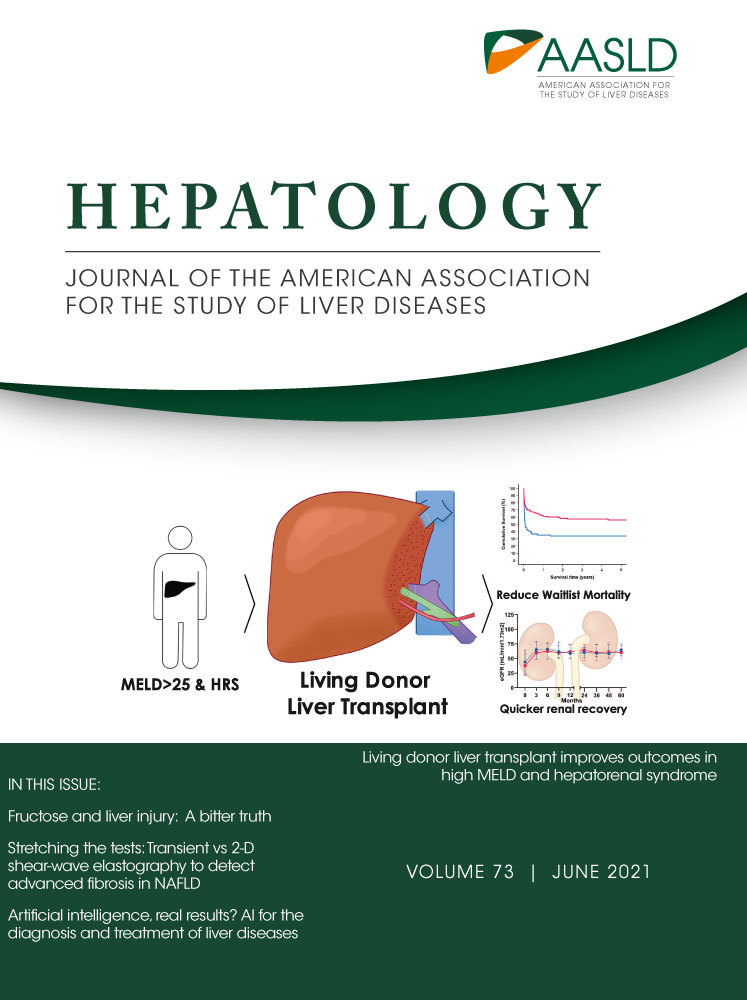REPLY:
We appreciate the thoughtful comments of Huo, Liu, and Hsu. They mentioned their previous paper(1) comparing 11 HCC staging systems, suggested from our C-index results “it should not be interpreted that the HepatoScore-14 significantly augment(s) the prognostic accuracy of the current systems,” and wondered how our cohort characteristics impacted results. We make four comments in response.
First, our intention was not to introduce a new staging system for HCC, but rather it was to introduce a broad biomarker panel to supplement any of the existing systems with further explanation of biological heterogeneity. Indeed, the lack of tumor biomarkers extends beyond the 5 staging systems discussed in our paper to include all 11 mentioned in theirs,(1) so the need to better account for tumor biology is apparent.
Second, HepatoScore-14 achieved a C-index of 0.70, which was the same as Cancer of the Liver Italian Program (CLIP), even though HepatoScore-14 is based solely on the blood biomarkers and did not include any other clinical or pathologic information. Given that their paper(1) found CLIP to provide by far the best prognostic stratification, it stands to reason that C-index of 0.70 or greater is good in this context, even though they used other statistical measures in lieu of C-index in their analyses. This supports the notion that HepatoScore-14 provides valuable prognostic information.
Third, we did not consider the C-index results to be a primary goal of our paper, but we added these results to provide a reference point of the magnitude of prognostic information provided by HepatoScore-14 alone relative to other staging systems and to demonstrate its value as an independent predictor providing information over and above what is provided by existing systems (Table 3). These results clearly demonstrate that HepatoScore-14 adds prognostic information over and above CLIP, Barcelona Clinic Liver Cancer (BCLC), Child-Turcotte-Pugh, and a conglomerate of clinical factors, given the enormous HR for HepatoScore-14 and P < 0.0001 in each model. We consider our primary results to be the results in Table 1, not the C-index results, showing clearly that the HepatoScore-14 substratified individual levels of each staging system in a highly statistically significant and often dramatic fashion. These results strongly demonstrate that HepatoScore-14 augments existing staging systems and refines patient prognostic assessment. It remains to be determined the best way to incorporate a biological signature like HepatoScore-14 into a potential revised staging system, which is left for future consideration.
Fourth, we acknowledge that our M.D. Anderson cohort had a high proportion of moderately diseased patients, i.e., BCLC-C. We believe this is a feature of our study, since this is the systemic treatment population, and we demonstrated the broad prognostic benefit of our index in early, moderate, and late stage disease. It would be interesting to assess its performance in other broader cohorts and in particular to validate whether our results that HepatoScore-14 accurately picks a subset of early stage patients with poor prognosis or late stage patients with better-than-expected prognosis in future expanded cohorts. We welcome opportunities to further assess and study this panel to determine its best clinical use.




